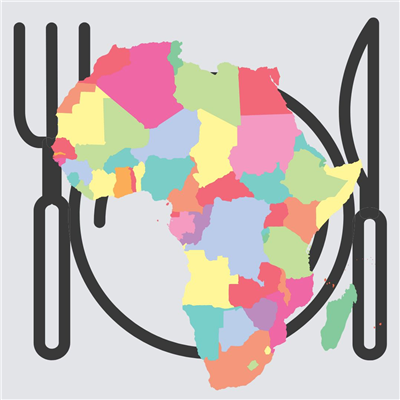It is time to change the plate and the fate of malnourished children across Africa
Published: Thursday, June 2, 2022
Every day, millions of children across Africa suffer from malnutrition. Good nutrition is the foundation of a child’s survival, health and development. Combating malnutrition in all its forms is critical for the development of Africa’s children.

In light of the theme for Africa Day 2022 being The Year of Nutrition for the African Union, Ruth Okoth, the operations manager for Local Village Foods shares some insight into what malnourished children should be eating and how we can play a part in filling their plates with foods that can empower a brighter future.
With close to 418 million people facing hunger, Africa has the second largest number of undernourished people, after Asia. Hunger has life-altering ramifications, especially for children. According to a 2021 Child Malnutrition report:
- 149.2 million children under the age of 5 years of age are stunted
- 45.4 million wasted, and
- 38.9 million are overweight globally.
Africa still experiences a malnutrition burden among children aged under 5 years and the number of children with stunting is declining globally in all regions except Africa.
These numbers are cause for alarm, but what do they actually mean? Malnourishment can be classified as one not receiving proper nutrition and does not distinguish between the consequences of too many nutrients or the lack of nutrients, both of which impair overall health. On one side of the scale, starving children are extremely vulnerable to disease.
When hunger weakens a child, even the most common illnesses can become life-threatening. But malnutrition also refers to children suffering from obesity which can also lead to health and development problems. Malnourished children can’t concentrate, engage in school, learn or thrive to their full potential and physically they are unable to meet many important growth milestones that are so critical for their development. Stunting and wasting fall under the banner of malnutrition too.
In an ideal world, children should be eating a balanced diet with varieties that offer adequate proportions of carbohydrates, proteins, vitamins and micronutrients - 1/2 of the plate should be filled with vegetables and fruits, 1/4 of the plate grains, and 1/4 protein. But often when malnourished children do get a meal it consists of unhealthy carbohydrates and processed options.
Africa has the potential to change the fate of malnourished children because of its large share of land that can be used for farming.
For example, Local Village Foods products which are locally grown are nutrient-rich with the potential to fight malnutrition when rightly combined. Whole grains and flour nourish the body with important nutrients like fibre, and vitamins — particularly B vitamins — and provide all the important nutrients that support healthy growth and development. Plant-based proteins are also good sources of fibre and contain lower calories and fat when compared to animal proteins. There are even snack options which are made from real fruits which gives a much-needed boost of vitamins and minerals.
The key to getting these types of food onto the plates of malnourished children lies in education. There needs to be a spotlight on farmers who can supply products ranging from grains to gluten-free flours to superfood powders, which can then be used to create products like pasta, snack bars, healthy treats, and so forth these various commodities. Education about what could be farmed at scale to support the development of healthy children provides people with correct information on the nutritional value of foods, food quality and safety, methods of preservation, processing and handling, food preparation and serving so that informed choices can be made about foods for an adequate diet.
Right off the bat, the following 3 things should be done to begin addressing childhood malnutrition:
- Nutrition education for primary caregivers about the right foods for children in terms of quantity and quality to ensure optimal growth and development to prevent malnutrition in children.
- Encouraging better nutritional intake for pregnant and lactating mothers.
- Encouraging vitamins and minerals supplementation in children to ensure they have all the nutrients that may be missed due to inadequate diets.
Then, longer-term measures must be put in place. Leaders and policymakers must advocate for and ensure the implementation of practical food and nutrition safety policies. Without these, the population will never become empowered with the knowledge and the skills required to ensure proper nutrition and the malnutrition statistics will continue to climb.
Further socioeconomic challenges must also be addressed. Simply producing a larger volume of healthier food more sustainably is not enough to ensure the wellbeing of malnourished children. Poverty reduction, social inclusion, increased equity, education, and health care, biodiversity conservation, sustainable energy, water security, and climate change adaptation and mitigation are all massive factors that contribute to childhood malnutrition as a whole.
In order to address these, policies must be changed. In South Africa for example, farmers aren’t subsidised by the government to grow these types of crops; they’re not incentivised and consumers are charged VAT on many of these products. These are all massive inhibitors.
Over the past two decades, the world has reduced the number of children under 5 globally who suffer from undernutrition by one third – that’s approximately 55 million children who are no longer missing out on nutrition that is helping them develop and thrive. It is possible to improve the circumstances for Africa’s future generations, but we need to collectively heed an urgent call to action before we reach the point of no return.
